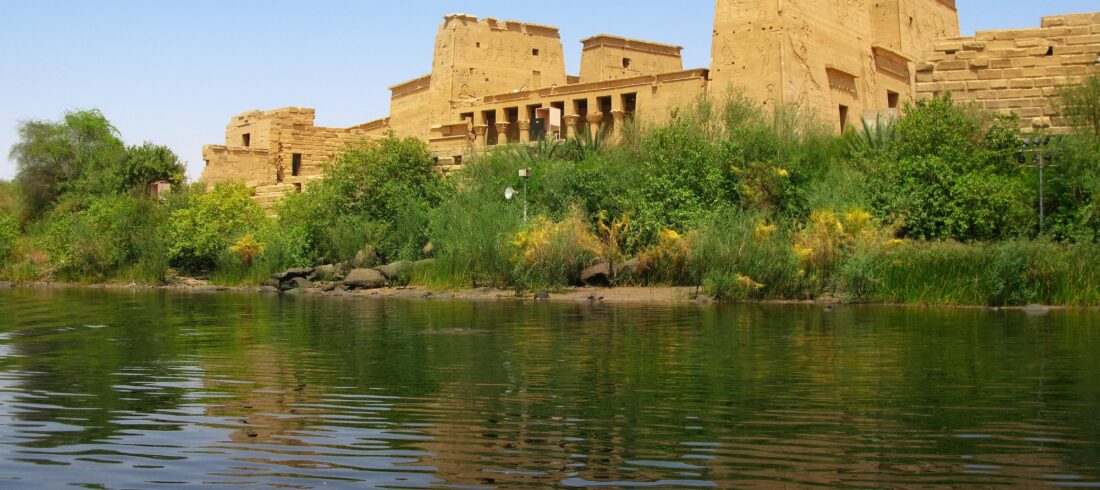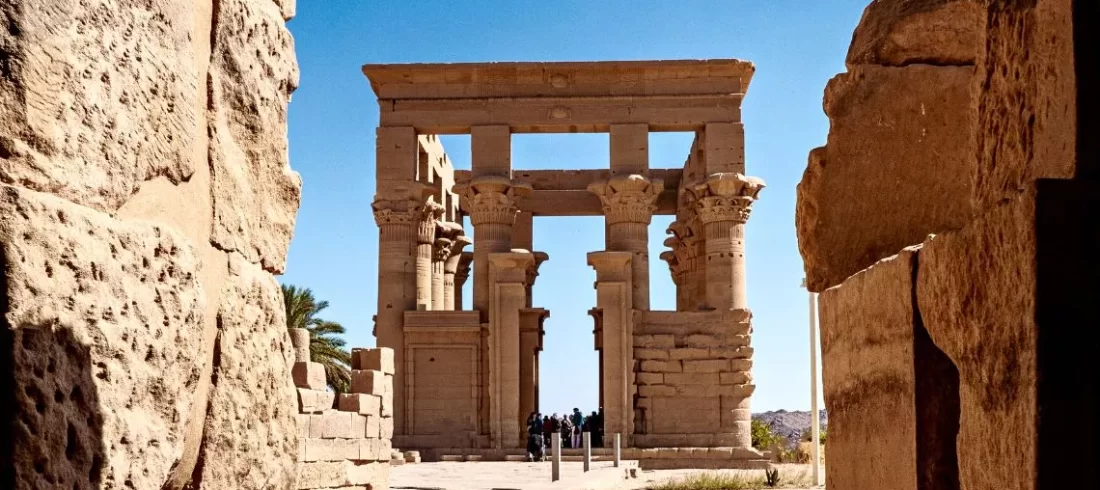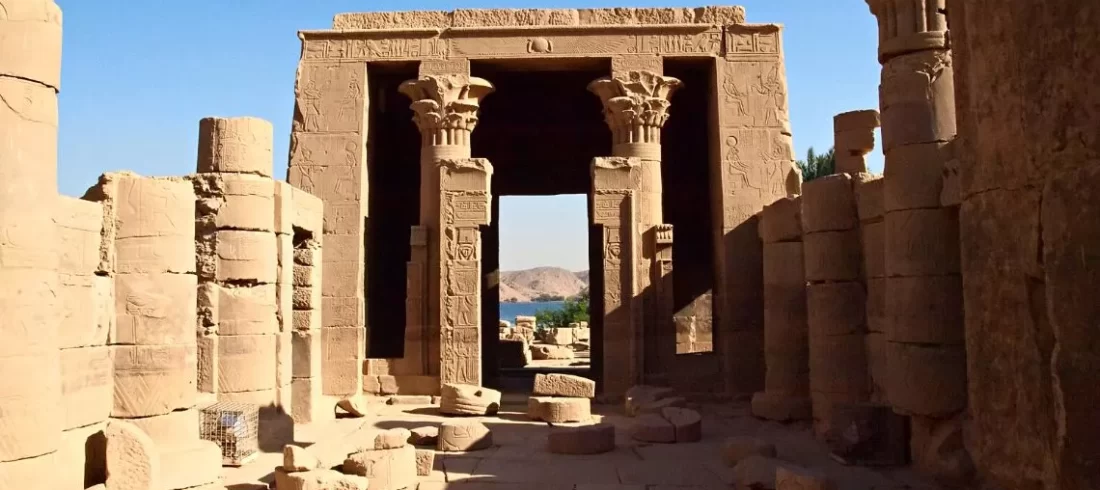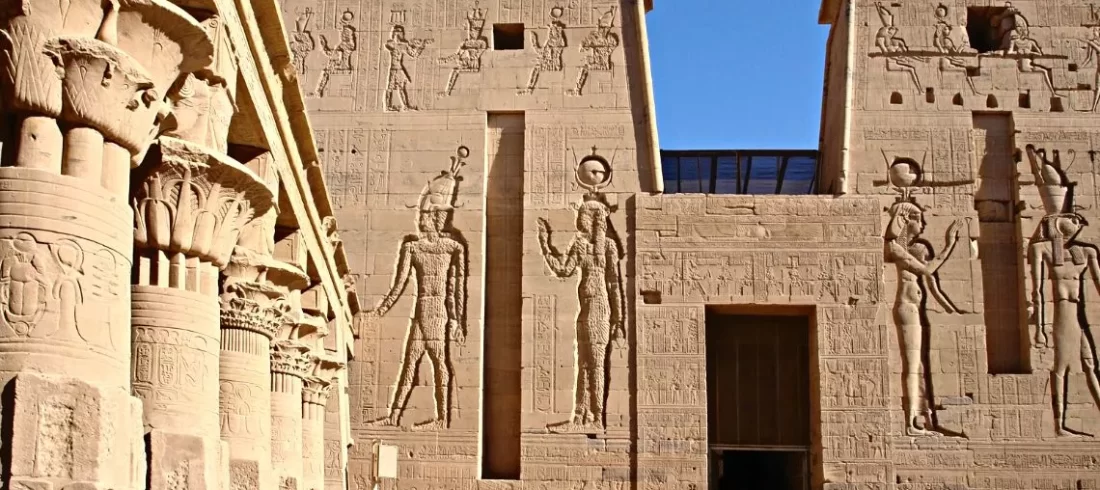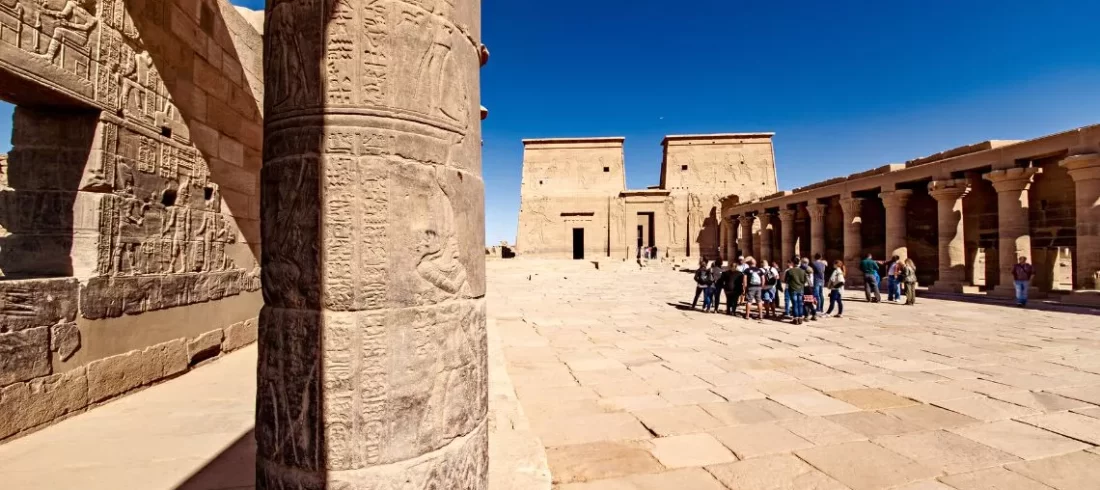The Temple of Isis is the largest structure on the island. The temple was primarily dedicated to Isis, but her husband Osiris and son Horus were also worshipped there. It was erected in the third and second centuries BCE and decorated from the time of Ptolemy II. The current Temple of Isis is primarily a Ptolemaic structure.
Trajan’s Kiosk is located about 20 meters south of the Temple of Hathor and may have once served as the main entrance from the river. Known locally as the Pharaoh’s Bed, the structure was left unfinished: under this emperor, only the southern screen was decorated with two sacrificial scenes, and the present building may date to the reign of Augustus. It probably served as a resting point during processions.
Pronaos from the abandoned temple of Isis. This seems to be a well-known topic that has been documented in many articles about the conversion of Bishop Theodore to the Church of Stephen. Some of Philae’s smaller buildings were converted into temples (the temple of Arensnuphis and Hathor, the temple of Imhotep).
On the east side of the Temple of Isis stands the Temple of Hathor. It was decorated during the reigns of Ptolemy VI, Ptolemy VIII, and Augustus, and originally had its own mud-brick enclosure wall. A built-in block mentions Ptolemy XII. The columned vestibule on the west side was added under Augustus or earlier, not during Tiberius’s reign. In the mid-first century CE, a quay platform was added on the east side. The temple’s cult was centered on Hathor as the embodiment of the Sun’s Eye brought back from Nubia.
Pronaos from the abandoned temple of Isis. This seems to be a popular theme, as it is written in many documents about the conversion of the Church of Stephen by Bishop Theodore. Some of the smaller temples at Philae were converted into temples (the temples of Arensnuphis and Hathor, and also the temple of Imhotep).
In fact, the Gate of the Emperor Adrian is actually a long corridor a passage with a decorated side wall, and has now lost the intestinal wings attached to his western exit. This is the last cult building on the right Filae, but the rescue of the completely completed temple between C has not been completed. At the beginning of 117 and 180 AD, the gate was on the other side of the chapel to moor and worked as the starting point of the ISIS queue to the Osiris tomb in Abaton. Among other things, it bears the abaton decree with regulations concerning the cult of Osiris on Biga and a text recording the donation of a vineyard to the Temple of Isis.
The Nectanebo kiosk is a room-free room that originally had 14 columns, including six. Nectanebo kiosk I was built at the southern end of the island, it is located at the main entrance to the colonnade. It was built in the 30th dynasty, to honor Isis, and it is clear that it was the prototype for the later kiosks on the island and elsewhere. The remaining columns have two capitals — the ornate floral capitals, and above them Hathor-headed square columns. The walls of this foyer are decorated with reliefs of the king offering various items to the gods, and the partitions of the kiosk are connected by Hathor columns, surmounted by carved uraeus (coils).
The Ptolemy II Philadelphic Gate is located between the Temple of Imhotep and the first pylon of the Temple of Isis, north of the first colonnade. It is decorated with statues of the pharaohs led by Isis. It may have been built earlier as a late temple of Isis in the 30th Dynasty and was subsequently embellished by Ptolemy II and added to the first Ptolemy pylon of Isis.


